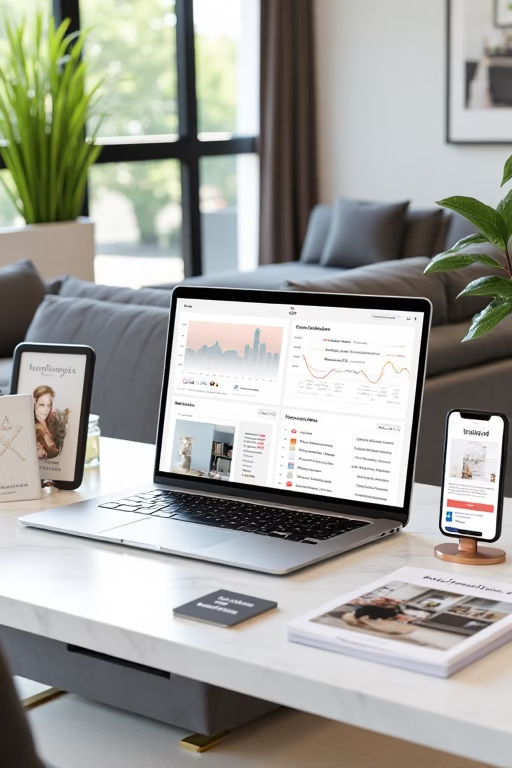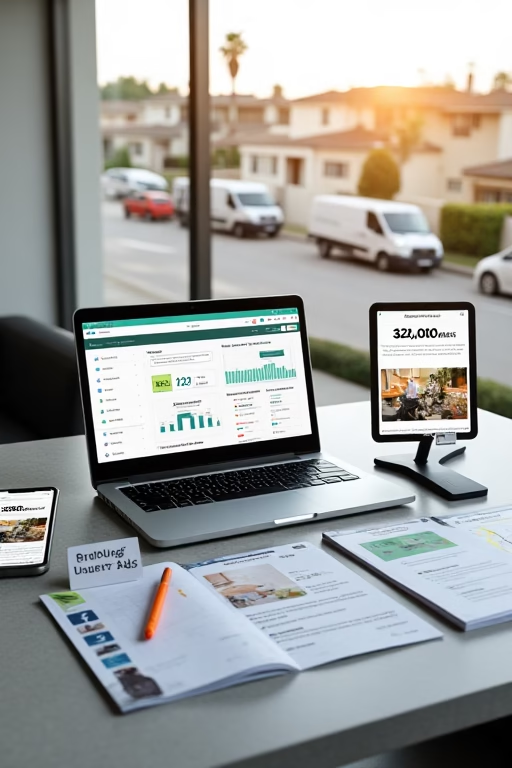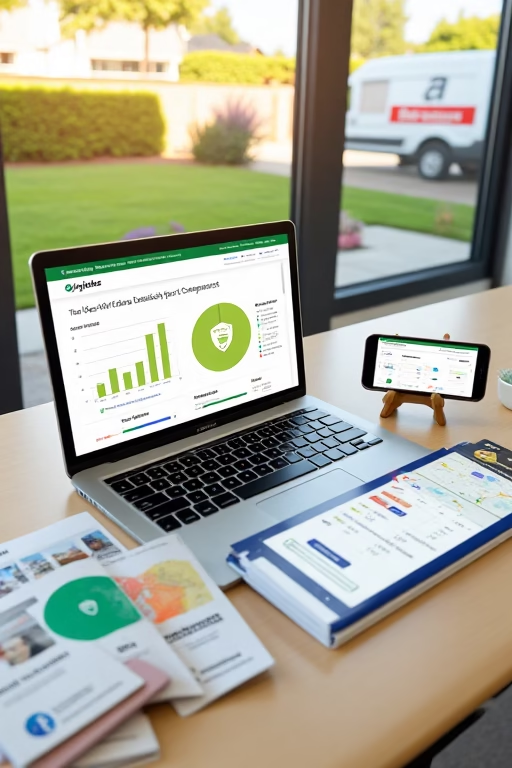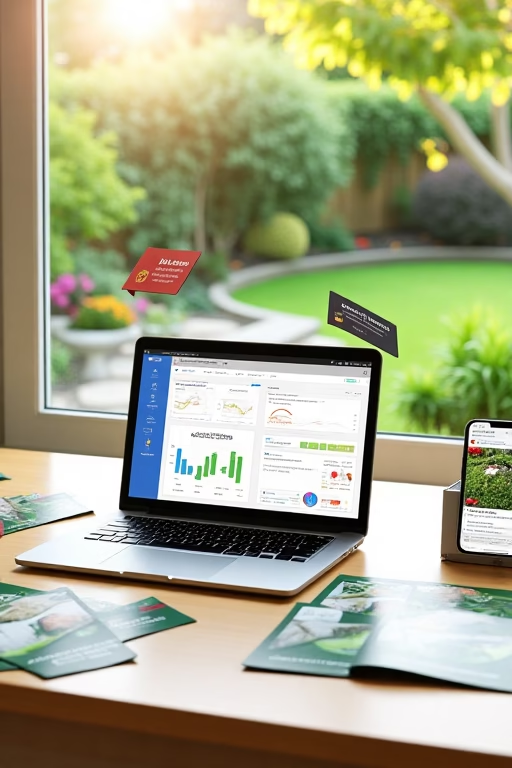How to Sell More Interior Design Services: Reaching High-End Clients
How to Sell More Interior Design Services: Reaching High‑End Clients
Your Premium Growth Guide by Market Wiz
Table of Contents
- Introduction: The Luxury Design Landscape
- 1. Defining Your High‑End Client Persona
- 1.1 Demographic & Psychographic Insights
- 1.2 Mapping Decision‑Makers
- 2. Positioning & Branding for Luxury
- 2.1 Visual Identity & Website UX
- 2.2 Social Proof & Awards
- 3. Portfolio Showcase & Case Studies
- 3.1 High‑Quality Photography
- 3.2 Video Walkthroughs
- 4. Premium Package Design & Pricing
- 4.1 Tiered Retainers
- 4.2 Value‑Based Pricing
- 5. Targeted Lead Generation Strategies
- 5.1 Referral Partnerships
- 5.2 Exclusive Events & Showhomes
- 6. Digital Marketing Channels
- 6.1 SEO for Design Keywords
- 6.2 Instagram & Pinterest Advertising
- 6.3 Email Nurturing Sequences
- 7. Networking & Strategic Alliances
- 7.1 Architect & Real Estate Partnerships
- 7.2 Luxury Vendor Collaborations
- 8. Consultative Sales Process
- 8.1 Discovery & Vision Workshops
- 8.2 Interactive 3D Proposals
- 9. Exceptional Client Experience & Upsells
- 9.1 White‑Glove Onboarding
- 9.2 Ongoing VIP Maintenance Plans
- 10. Scaling with Systems & Team Building
- 10.1 Hiring Specialist Designers
- 10.2 Automated Project Management
- Conclusion & Next Steps
- 25 FAQs
- 25 Extra Keywords
Introduction: The Luxury Design Landscape
The high‑end interior design market is fueled by clients seeking exclusivity, craftsmanship, and transformative spaces. To capture their attention—and their contracts—you must speak their language: impeccable branding, bespoke packages, and a marketing strategy as refined as the homes you design. In this guide, Market Wiz unveils a holistic approach to attract affluent clients and grow your luxury design practice.
1. Defining Your High‑End Client Persona
1.1 Demographic & Psychographic Insights
Affluent clients often share traits: net worth thresholds, urban or resort properties, appreciation for art and design. Dive into psychographics—lifestyle aspirations, travel habits, and design influences—to tailor your messaging.
1.2 Mapping Decision‑Makers
Large projects involve homeowners, builders, and asset managers. Identify each stakeholder’s priorities—budget control, timeline, resale value—and address them in your proposals.
2. Positioning & Branding for Luxury
2.1 Visual Identity & Website UX
Your brand palette, logo, and website must reflect sophistication. Invest in professional photography, minimalistic layouts, and intuitive navigation to showcase your design ethos.
2.2 Social Proof & Awards
Display design awards, magazine features, and high‑profile collaborations prominently. Client testimonials with project metrics—ROI on resale value—build credibility.
3. Portfolio Showcase & Case Studies
3.1 High‑Quality Photography
Commission professional photo shoots that capture lighting, textures, and spatial flow. Curate a gallery by project type: penthouses, villas, yacht interiors.
3.2 Video Walkthroughs
Create cinematic video tours with voiceover narration explaining design intent. Host on YouTube and embed on landing pages to boost engagement and SEO.
4. Premium Package Design & Pricing
4.1 Tiered Retainers
Offer Discovery (concept board + mood gallery), Signature (full design + sourcing), and Bespoke (end‑to‑end management + art curation) packages. Link fees to square footage and level of service.
4.2 Value‑Based Pricing
Price based on perceived value—enhanced property value, lifestyle elevation—instead of hourly rates. Package installation, styling, and post‑occupancy support.
5. Targeted Lead Generation Strategies
5.1 Referral Partnerships
Collaborate with luxury real estate agents, architects, and high‑end furniture showrooms. Offer co‑branded events and reciprocal referrals to tap into affluent networks.
5.2 Exclusive Events & Showhomes
Host invitation‑only open houses in model homes and luxury developments. Provide branded gift bags and styling consultations to capture leads.
6. Digital Marketing Channels
6.1 SEO for Design Keywords
Target long‑tail luxury search terms—“Beverly Hills penthouse interior designer.” Optimize on‑page SEO and build backlinks from design authority sites.
6.2 Instagram & Pinterest Advertising
Use targeted ads featuring project highlights and client testimonials. Leverage Pinterest’s visual search to reach decor enthusiasts.
6.3 Email Nurturing Sequences
Capture emails via gated lookbooks. Send curated design insights, behind‑the‑scenes stories, and exclusive preview invites to nurture prospects.
7. Networking & Strategic Alliances
7.1 Architect & Real Estate Partnerships
Co‑market with architects and developers on joint projects. Exchange leads and showcase collaborative case studies.
7.2 Luxury Vendor Collaborations
Partner with bespoke furniture makers, art galleries, and high‑end textile houses. Cross‑promote through lookbooks and events.
8. Consultative Sales Process
8.1 Discovery & Vision Workshops
Conduct immersive in‑home workshops to explore client lifestyles, preferences, and functional needs. Use mood boards and material samples to co‑create vision.
8.2 Interactive 3D Proposals
Deliver 3D renderings and VR walkthroughs to allow clients to experience spaces before implementation, increasing buy‑in and reducing revisions.
9. Exceptional Client Experience & Upsells
9.1 White‑Glove Onboarding
Provide welcome kits with branded notebooks, project timelines, and communication guidelines. Assign a dedicated project concierge.
9.2 Ongoing VIP Maintenance Plans
Offer styling refreshes, seasonal decor updates, and art rotation services under annual retainer models to deepen relationships and revenue.
10. Scaling with Systems & Team Building
10.1 Hiring Specialist Designers
Recruit junior designers for concept work and senior project managers for execution. Maintain quality through standardized design playbooks.
10.2 Automated Project Management
Use platforms like Ivy and Studio Designer for scheduling, billing, and vendor coordination—freeing you to focus on creative direction.
Conclusion & Next Steps
Reaching high‑end interior design clients demands a blend of refined positioning, bespoke offerings, targeted outreach, and flawless client experiences. Start by refining your luxury persona, polishing your portfolio, and launching a targeted referral event this quarter. With disciplined execution and analytics‑driven refinement, you’ll see your practice flourish among affluent clientele.
25 Frequently Asked Questions
1. What defines a high‑end client?
Clients with significant design budgets, luxury properties, and a desire for bespoke solutions.
2. How do I set value‑based fees?
Align pricing with expected property value uplift, project complexity, and exclusivity of materials.
3. Which design awards matter?
International design awards (Elle Decor A‑List, Interior Design Best of Year) boost credibility.
4. How to get featured in design magazines?
Pitch unique projects with strong before/after visuals and compelling design stories.
5. What SEO keywords should I target?
Long‑tail terms like “luxury interior designer [city]” and “bespoke home styling.”
6. Is Instagram advertising effective?
Yes—visual platforms convert well for design. Use carousel ads to showcase multiple rooms.
7. How to host a successful showhome event?
Invite top local realtors, architects, and design enthusiasts; offer guided tours and branded gifting.
8. How many leads convert?
Average 10–20% for high‑touch services; higher when proposals include immersive experiences.
9. What CRM suits designers?
Studio Designer and Ivy offer industry‑specific project and financial management.
10. How to handle scope creep?
Include clear change‑order processes and fees in your contract to manage additional requests.
11. How often update portfolio?
Quarterly—keep your showcase fresh with recent projects and seasonal lookbooks.
12. Should I offer virtual consultations?
Yes—initial virtual meetings expand reach and streamline scheduling for busy clients.
13. How to solicit testimonials?
Request video or written feedback upon project completion, highlighting measurable outcomes.
14. What’s a good email cadence?
Bi-weekly newsletters and monthly drip sequences keep prospects engaged without overload.
15. How to measure ROI?
Track lead source, proposal-to-contract rate, and average project value per channel.
16. Should I sponsor design events?
Yes—sponsoring local or national design festivals boosts visibility among affluent audiences.
17. How to price art curation?
Charge a percentage of artwork cost or a flat fee per selection package, reflecting expertise.
18. How to upsell maintenance?
Offer seasonal styling updates, refresh packages, and concierge sourcing for new pieces.
19. What metrics matter?
Lead conversion rate, average contract value, client satisfaction score, and referral rate.
20. How often to audit strategy?
Quarterly—to adapt to market trends and performance data effectively.
21. How to use Pinterest?
Create boards for design styles and project mood boards; link pins back to service pages.
22. Are 3D renderings worth it?
Absolutely—they enhance client buy‑in and reduce costly revisions during implementation.
23. How to manage vendor relationships?
Formalize agreements, share project timelines, and maintain regular communication.
24. What’s the first step?
Define your luxury client persona and refine your brand messaging to resonate with them.
25. How to scale sustainably?
Systematize your process, hire specialists, and invest in automation tools for consistent quality.
25 Extra Keywords
- luxury interior design marketing
- high-end client acquisition
- designer branding strategy
- interior design SEO tips
- Instagram ads for designers
- Pinterest marketing for interiors
- referral marketing designers
- 3D rendering proposals
- studio designer CRM
- bespoke design packages
- portfolio showcase design
- interactive design workshops
- email drip campaigns for designers
- luxury vendor partnerships
- designer website UX
- showhome event marketing
- video walkthrough interiors
- high-ticket design retainers
- white-glove client onboarding
- design awards promotion
- scaling design practice
- automation tools for designers
- upscale design referrals
- interior design analytics
- Market Wiz design guide
How to Sell More Interior Design Services: Reaching High-End Clients Read More »








7. Social Media Strategy for Junk Removal
Leverage TikTok and Instagram Reels to film time‑lapse cleanouts with trending music. Share customer testimonials and crew spotlights on Facebook. Use geotargeted ads to reach homeowners in specific neighborhoods or zip codes.